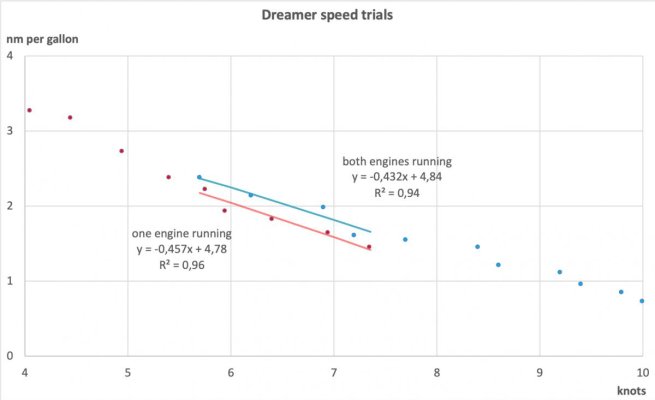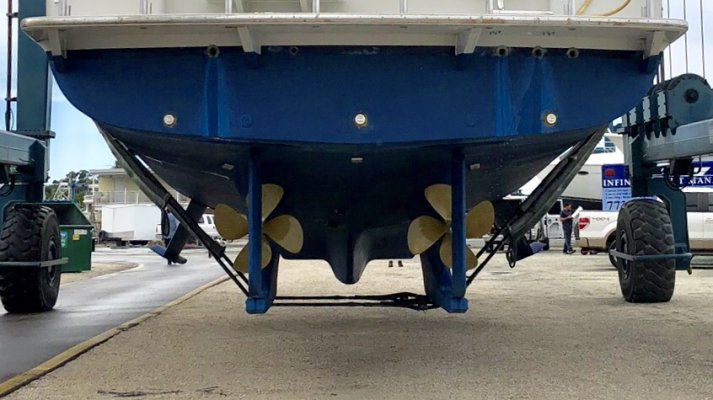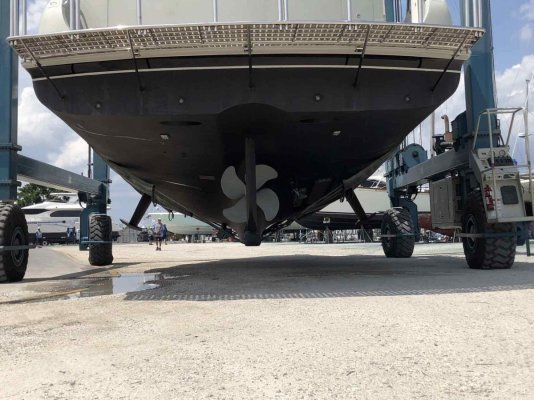Steve91T
Guru
- Joined
- Sep 12, 2016
- Messages
- 898
- Location
- USA
- Vessel Name
- Abeona
- Vessel Make
- Marine Trader 47’ Sundeck
Steve91T, you keep changing the parameters. Two identical boats, one with one engine and the other with two engines, both engines are identical. The single will burn less fuel at 4 kts than the twin at 4 kts.
On your boat, pick a speed, see what your flow meters say. Put one engine to neutral, increase the throttle on the other engine until you have returned to your picked speed, then look at your flow meters.
If you don’t have flow meters you won’t have any usable data.
If all you do is put one engine to neutral and your boat slows down 1 kt then yes you will save fuel but not because you went to one engine but because you slowed down.
I don’t have meters. Unfortunately I can’t provide the data I’d love to. For my own personal knowledge.
Ok so here’s what I’ll do. Run 1600 rpm with both engines and note my speed. Then bring one to neutral and note the speed. It should be in the 7-7.5 kt range. Then I’ll run both engines and whatever rpm gives me the single engine speed (7-7.5kts) and again pull one back to neutral and see what happens.




